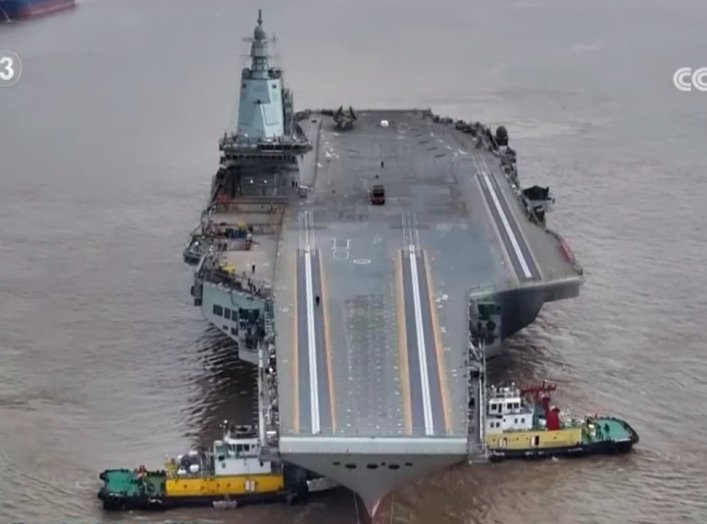China Is Slowly Becoming an Aircraft Carrier Powerhouse

The Chinese military has been spending a lot on its navy and has created the largest naval force in the world. When it comes to aircraft carriers, although it is still behind, it is slowly catching up.

China is on the rise. After decades of slumber, Beijing is asserting its power. As it often does, it began with economics. China has built the world's second-largest economy and is using money to increase its influence worldwide. It has also been spending big to modernize and expand its military.
Over the last 20 years, the Chinese military has made strides in its capabilities, becoming a near-peer threat to its U.S. counterpart.
When it comes to military force, the traditional litmus test to being a superpower is the aircraft carrier. These floating cities can project power and influence foreign policy around the world like few other policy tools.
The Chinese military has been spending a lot on its navy and has created the largest naval force in the world. When it comes to aircraft carriers, although it is still behind, it is slowly catching up.
The Chinese Aircraft Carrier Fleet
The first aircraft carrier of the Chinese Navy was an old Soviet warship. The Liaoning (Type 001) was built on the hull of a decommissioned Russian Admiral Kuznetsov-class aircraft carrier, which Kyiv sold to China in 1998. The Liaoning has been operational since 2019.
The second aircraft carrier of the Chinese Navy is the Shandong (002). Contrary to the Liaoning, the second aircraft carrier of the Chinese Navy was built in Chinese shipyards. However, Chinese shipbuilders used the Liaoning as a model for building the Shandong, improving certain aspects. The Shandong has also been operational since 2019.
Both aircraft carriers are Short Take-off, Barrier-Arrested Recovery (STOBAR), meaning that they have a ramp at the stern of the warship to help aircraft take off. However, STOBAR carriers are more limited to the fighter jets that they can carry, requiring aircraft with a very high thrust-to-weight ratio.
The third aircraft carrier of the Chinese Navy is the Fujian (003). Designed and built in China, this is Beijing’s most advanced carrier. It is a Catapult-Assisted Take-off, Barrier-Arrested Recovery (CATOBAR)—or what you would normally think an aircraft carrier to look like—and thus doesn’t have the limitations the Liaoning and Shandong have. The Fujian is still going through sea trials. However, it is expected to be operational soon. The Pentagon has predicted that the Chinese navy’s third and most advanced aircraft carrier will be operational by 2024.
An Important Consideration
There is, however, an important consideration. Despite rapid advancements to its carrier capabilities and the addition of new warships, the Chinese navy lacks real-world experience. Arguably more important than the weapon system or platform itself, experience and proficiency make the difference when the going gets tough.

As of now, the Chinese navy doesn’t have that. But it will in the future. And the U.S. military ought to use this “grace period” to maintain its technological and qualitative advantages.
The Indo-Pacific is the battlefield of the future. As such, aircraft carriers will play an important role. Understanding Chinese capabilities and working around them is key to winning a potential conflict with Beijing.
- Questions and Answers
- Opinion
- Story/Motivational/Inspiring
- Technology
- Art
- Causes
- Crafts
- Dance
- Drinks
- Film/Movie
- Fitness
- Food
- Games
- Gardening
- Health
- Home
- Literature
- Music
- Networking
- Other
- Party
- Religion
- Shopping
- Sports
- Theater
- Wellness
- News
- Culture
- War machines and policy

